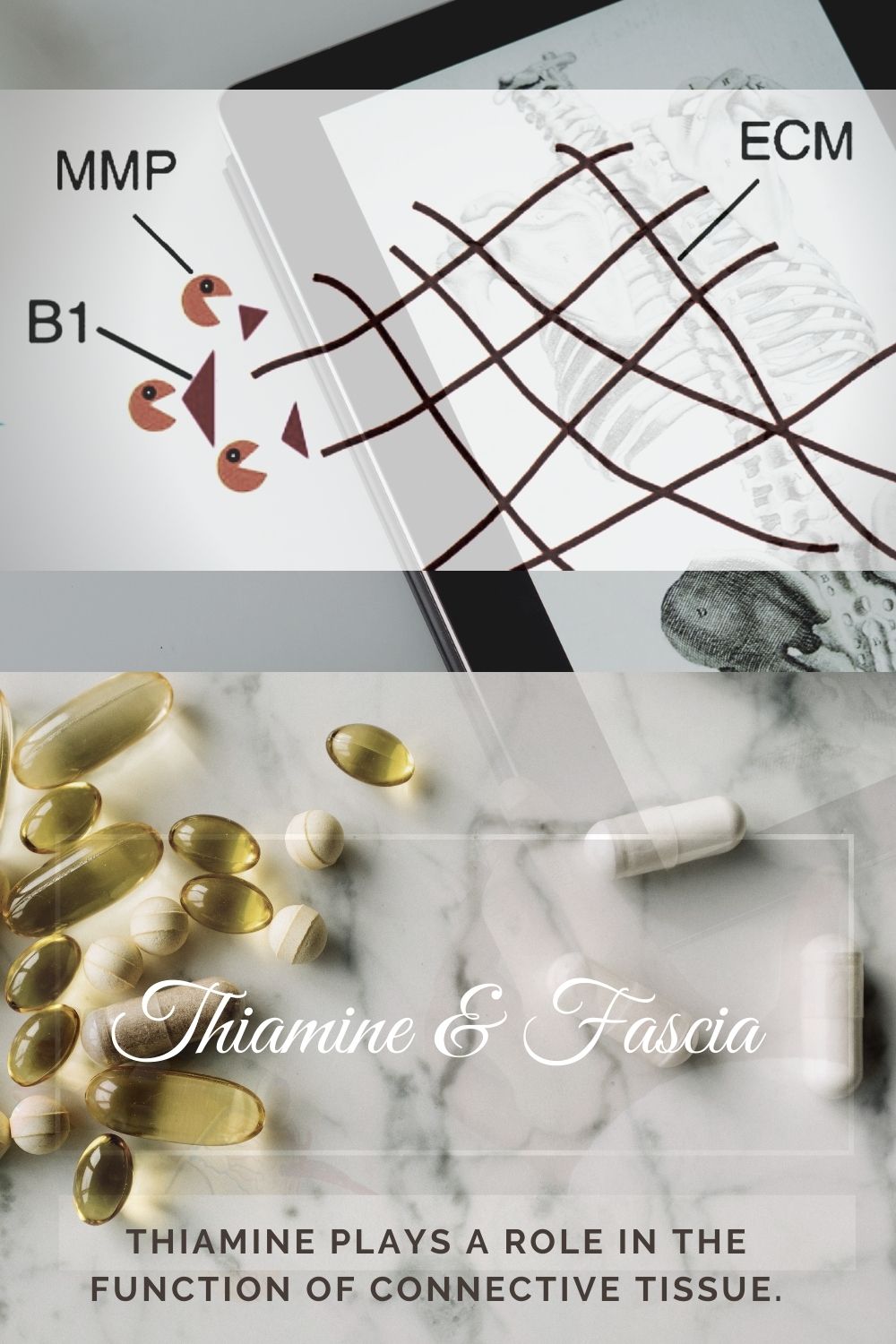Thiamine Vitamin B1 role in fascia and connective tissue health and disorders like Ehlers-Danlos Syndrome and hypermobile spectrum disorders.
Key points:
- Thiamine plays a role in the function of connective tissue.
- Thiamine influences inflammation through connective tissue proteins.
- Supplementation with thiamine (usually in its salt form) is warranted in connective tissue disorders like EDS and HSD.
- Trial of lipothiamine (a form of thiamine that crosses the blood brain barrier) may be needed in severe cases.

We don’t often associate thiamine with connective tissue health. Instead, we jump to Vitamin C. However, B-group vitamins are also essential to connective tissue health, and deficiencies are associated with connective tissue abnormalities. In addition, B-group vitamins are essential for optimal brain function, cell proliferation, and replacement and maturation of red blood cells.(1) Insufficient amounts are associated with higher levels of neural inflammation and oxidative stress (marked by increased blood plasma homocysteine).(2)
Typically attention is given to Vitamin B6 and B12; Vitamin B1, thiamine, is also important. Thiamine plays a key role in collagen synthesis and deficiency can impair collagen synthesis.(3) Thiamine is responsible for wound healing and in particular collagen type 3.(4)
Historically, thiamine deficiency leads to a condition called Beriberi. Beriberi was known for millennia in Asia. The prevalence of beriberi increased in Asia with a change in the milling process for rice in the late 19th century and subsequent dietary reforms in the Japanese Navy largely eradicated beriberi by 1887.(5) In Beriberi, intercellular edema, congestion, hemorrhage occur. Swelling of connective tissue also occurs with subsequent interstitial and replacement fibrosis.(6) Most patients with connective tissue disorders do not develop full blown beriberi, but they are at risk for thiamine deficiency related issues because of gluten/grain intolerance and gastrointestinal problems that lead to malabsorption.
The pathology of thiamine deficiency entails impaired energy-production from mitochondria in the form of ATP as well as increased oxidative stress.(7) Thiamine influences collagen synthesis(3) through its influence on matrix metalloproteinases.(9) Matrix metalloproteinases are proteolytic enzymes responsible for both collagen and extracellular matrix remodeling and the regulation of leukocyte migration, which is an important step in inflammatory processes and maintenance of connective tissue integrity. Supplemental thiamine can reverse this pathologic process and, in particular, metalloproteinase dysregulation.(9)
TO READ MORE AND RECEIVE MORE IN-DEPTH MATERIAL, PLEASE SUBSCRIBE TO FASCIA ROUNDS. EMAIL This email address is being protected from spambots. You need JavaScript enabled to view it. TO RECEIVE THIS EDITION OF FASCIA ROUNDS.

